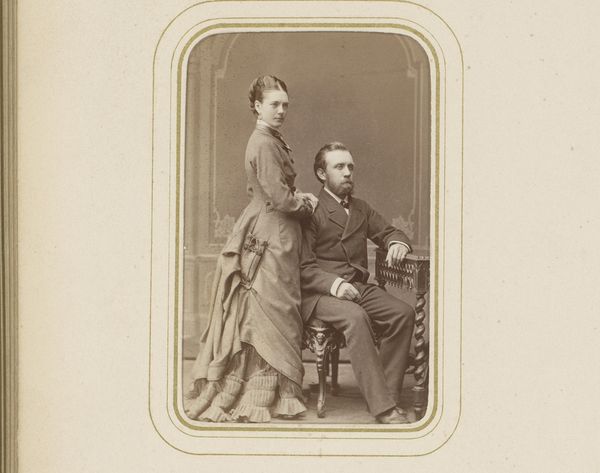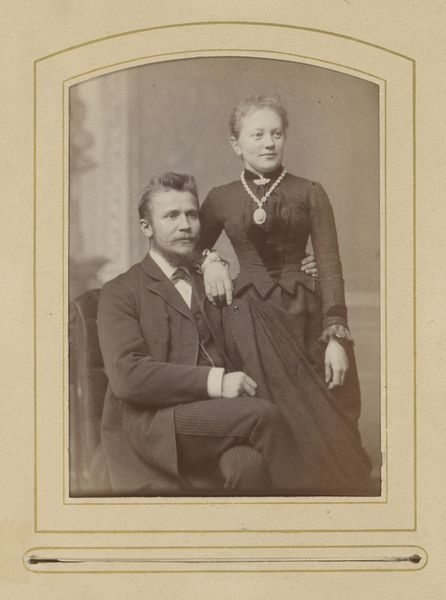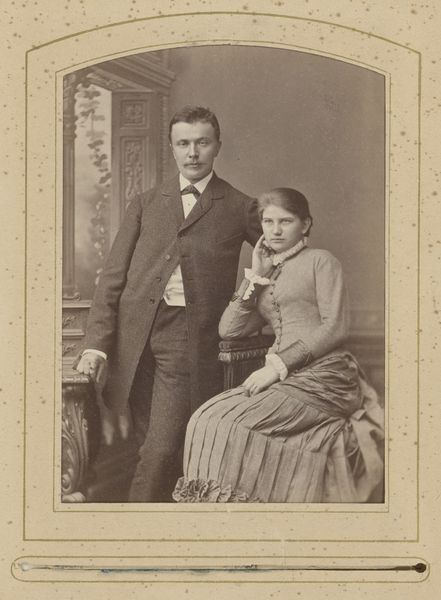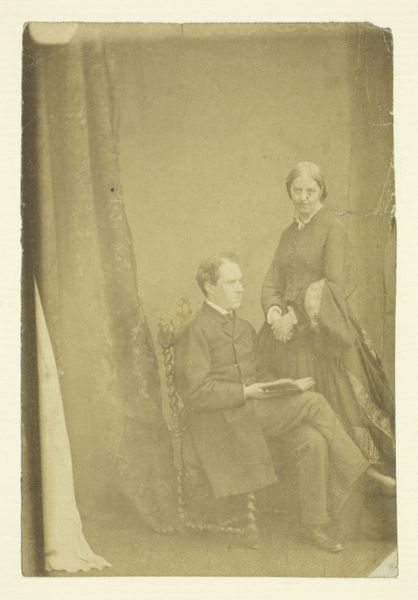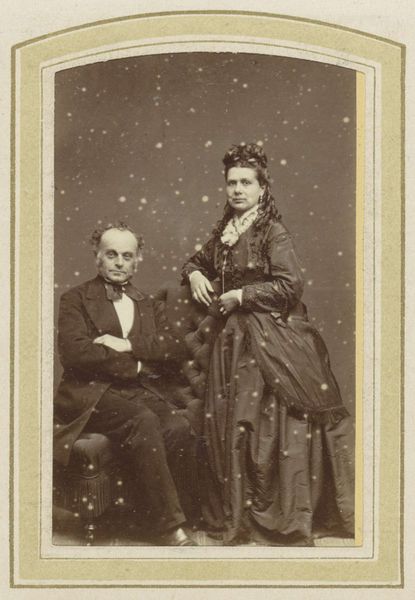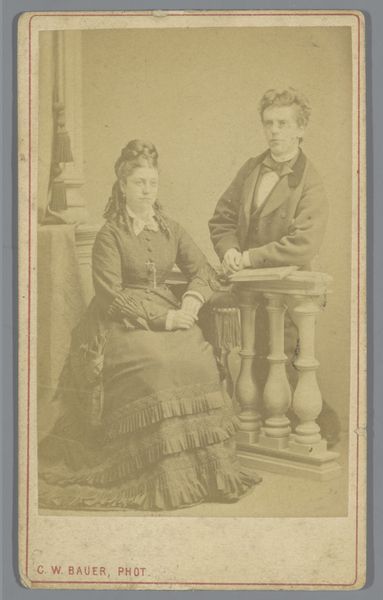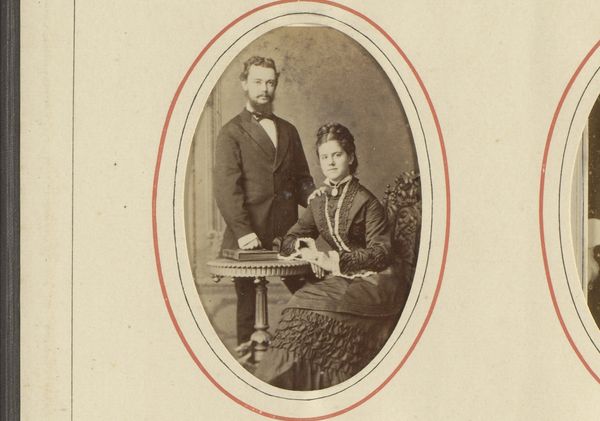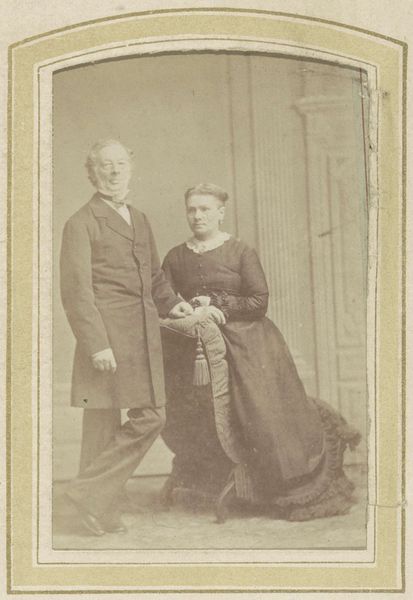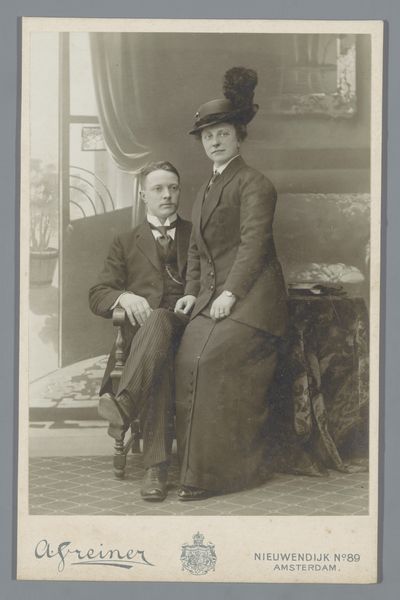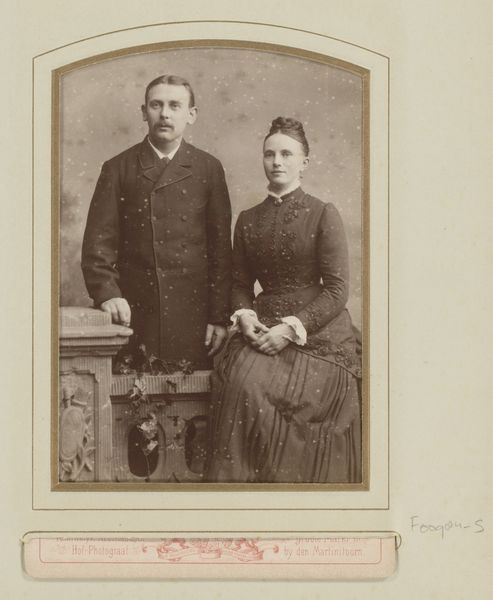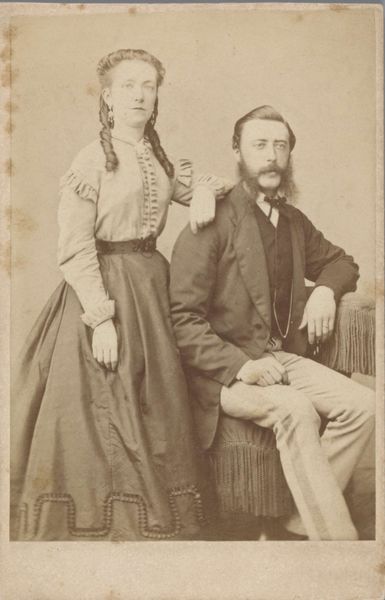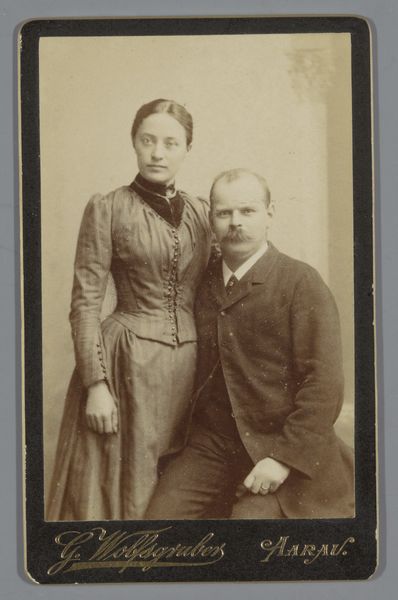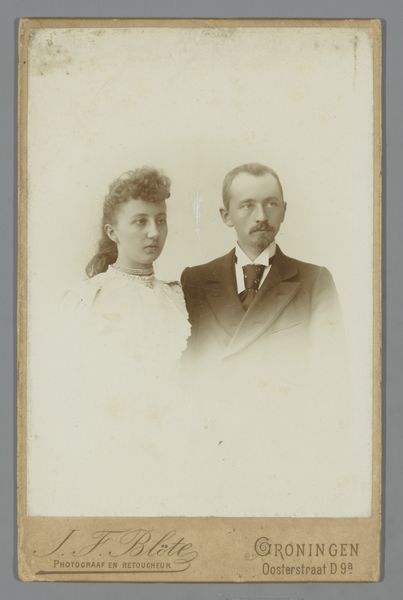
daguerreotype, photography
#
portrait
#
daguerreotype
#
photography
#
historical photography
#
realism
Dimensions: height 88 mm, width 53 mm
Copyright: Rijks Museum: Open Domain
Editor: This is a daguerreotype from between 1880 and 1886, called "Portret van man en vrouw"—Portrait of a Man and Woman. It has a sepia tone, and the sitters have rather stern expressions. What strikes you about this image? Curator: Note how the composition orchestrates a balance between stasis and dynamic tension. The rectilinear backdrop offers a stable counterpoint to the curvilinear forms of the subjects. Editor: Could you elaborate on "dynamic tension?" Curator: Observe how the female figure leans slightly forward, her hand resting on the male figure’s shoulder. This asymmetry is crucial. Further, the details on the left--the ruffles and tie--create texture lacking on the right. The frame itself also acts as a compositional element, contrasting hard edges with soft internal forms. Editor: So, it's not just about *who* is in the photograph but how they are placed within the frame and the use of detail? Curator: Precisely. The success of the portrait stems from how these formal elements interact. Each tone, each shape, contributes to an image much richer than just the subjects alone. What seems at first a straightforward image of a couple yields layers of structural complexity upon further examination. The lack of color is, interestingly, key to its visual impact, encouraging appreciation for the textural range, in an interplay of shadows. Editor: I hadn’t considered that. Paying attention to the shape and placement of objects within the image gives us so much to discuss! Thanks! Curator: Indeed! Focusing on the formal structures can unlock insights beyond the simple subject. It changes how we interpret its meaning and its visual rhetoric.
Comments
No comments
Be the first to comment and join the conversation on the ultimate creative platform.
